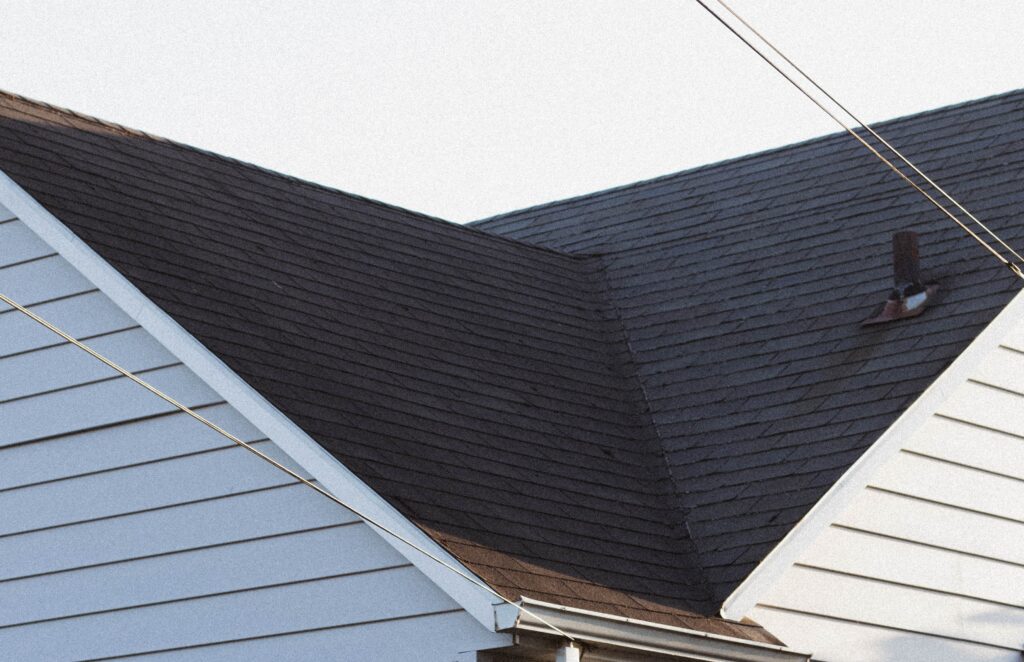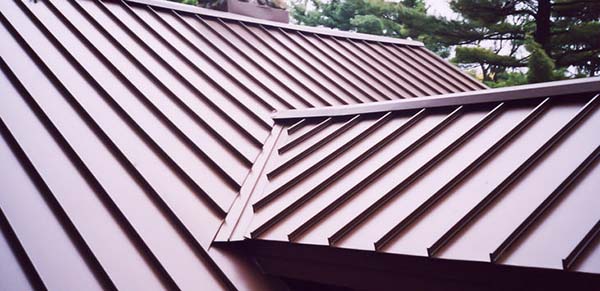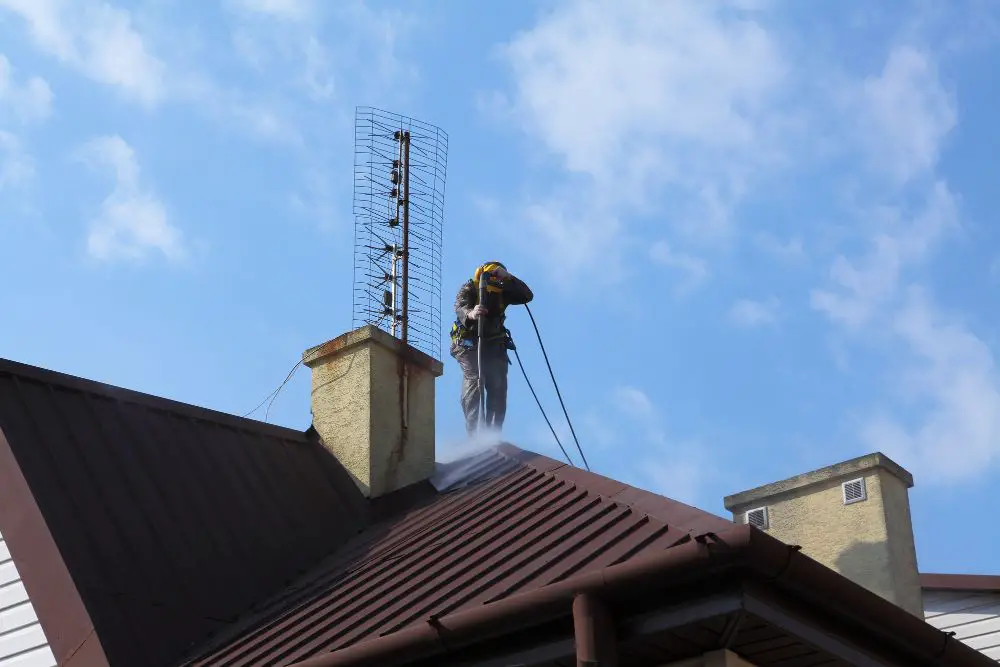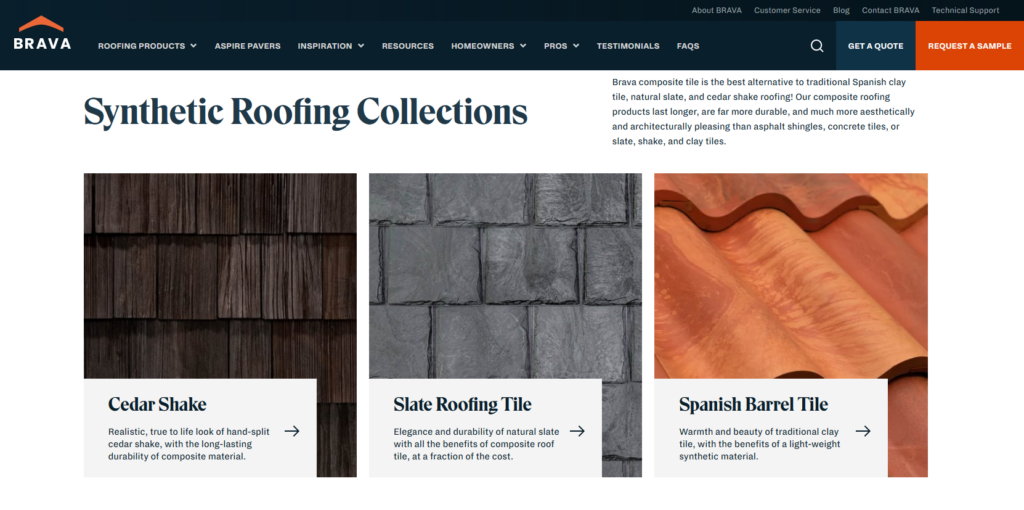Have you ever wondered what lies beneath the surface of your roof? Among the roof shingles and structure, there’s a crucial element that often goes unnoticed—the roofing valley types. These valley areas or valley regions play a vital role in redirecting water and debris away from your home, ensuring its durability and strength.
In this blog post, we’ll explore the different roofing valley types, uncovering their unique features and benefits. Whether you have a gable, hip, or shed roof, there are roofing valley types designed to cater to your specific needs of your roofing system.
We’ll delve into close valleys, and open valleys. Each type offers a distinct blend of aesthetics and functionality, from traditional craftsmanship to modern elegance.
Table Of Contents:
- Closed Roofing Valley: A Sleek and Seamless Choice
- Open Roof Valley: The Durable and Efficient Choice
- Factors to Consider When Choosing a Roofing Valley Type
- Brava Roof Tile Solutions for Both Roofing Valley Types
- Importance of Proper Roof Valley Installation and Maintenance
- The Importance of Proper Roof Valley Installation and Maintenance
- FAQs in Relation to Roofing Valley Types
Closed Roofing Valley: A Sleek and Seamless Choice
Let’s talk about the closed roofing valley.
This type of valley region is known for its seamless appearance, as shingles run continuously over the junction between two slopes, hiding any metal flashing from view. Closed roofing Valley comes in three popular techniques:

- Woven Valleys Technique: Asphalt shingles are interwoven on both sides of the valley to create a continuous flow. It looks great but can be tricky to install correctly.
- Closed-Cut Valley Method: One side of the valley has asphalt shingles laid up to it while the other side has them cut along the valley line. This method provides a clean look with less chance for debris buildup than woven valleys.
- California Valley Cut Approach: Similar to cut valleys, but with an additional layer underneath that extends across the valley. This extra layer adds protection against leaks and improves durability.
To ensure your closed roofing valley stands strong against potential leaks or damage, don’t forget to install an ice-and-water shield roofing underlayment material beneath overlapping shingle layers.
You might be wondering why you should choose closed roofing valley over open ones?
The answer lies in aesthetics – many homeowners prefer this style because it offers a smooth transition between different sections of their roofs without exposing metal flashing or liners used in open systems (more on those later).
A Word of Caution
While closed valleys look great, they may not be as durable or long-lasting as their open counterparts. Debris can accumulate in the valley area, leading to potential damage and leaks over time. So if you’re going for this option, make sure to keep an eye on your roof’s condition and perform regular maintenance.
In summary, closed roofing valley is a stylish choice that can enhance your home’s curb appeal while providing adequate protection against leaks – just remember to stay vigilant with upkeep.
Key Takeaway:
Closed roofing valley is a popular choice for homeowners due to their seamless appearance, with shingles running continuously over the junction between two slopes.
They come in three techniques: woven valley, closed-cut valley and California cut valley approach. However, it’s important to note that closed valleys may not be as durable or long-lasting as open ones and regular maintenance is necessary to prevent potential damage and leaks caused by debris accumulation.
Open Roofing Valley: The Durable and Efficient Choice
Are you considering different Roofing valley types for your project? Let’s take a closer look at open roofing valleys, a popular choice among roofing professionals.
But what makes them so popular?

The answer lies in their unique design, which promotes better water runoff and increased durability compared to closed valley systems.
V-Shaped Metal Valley Liners
In an open valley system, V-shaped metal liners are installed directly into the juncture between adjacent slopes. This creates a seamless channel for water to flow off your roof with ease, reducing debris buildup and potential leaks over time.
W-Shaped Metal Valley Liners
Another option is W-shaped metal liners, which provide similar benefits as V-shaped ones but offer additional protection against wind-driven rain infiltration due to their double-layered design.
Easier Water Runoff
- Open roofing valley allow for faster drainage of rainwater from your roof surface thanks to their unobstructed channels created by the metal liners.
Durability and Longevity
- The use of metal flashing in open valleys reduces wear and tear caused by debris accumulation, resulting in longer-lasting performance than closed valleys.
Better Leak Resistance
- Metal liners also help prevent leaks at the junctions between slopes since there are no overlapping shingle layers involved like in closed valley systems.
If you’re looking for a roofing valley system that’s durable, efficient, and low-maintenance, open roofing valleys might just be the perfect choice for your project. However, it’s essential to consult with professional roofing contractors who specialize in this area before making any decisions based on personal preferences alone.
This article provides an excellent comparison of open and closed valley systems to help you make an informed decision.
In summary, open roof valleys offer superior performance due to their design, which promotes easier water runoff while providing increased durability and leak resistance compared to closed valley systems.
Key Takeaway:
Open roofing valley is a popular choice among roofing professionals due to their unique design that promotes better water runoff and increased durability compared to closed valley systems.
V-shaped or W-shaped metal liners create seamless channels for water flow, reducing debris buildup and potential leaks over time. Open roof valleys offer superior performance with easier water runoff, increased durability, and leak resistance compared to closed valley systems.
Factors to Consider When Choosing Roofing Valley Types
Alright, let’s dive in. When it comes to selecting the ideal roofing valley types for your endeavor, there are several essential components that must be taken into account. I’ve broken them down into three main categories:

- Aesthetics: The roofing valley type you choose can have a significant impact on the overall look of your roof. Consider the style and color of your roofing material, as well as the architectural design of your home or building.
- Durability: Different roofing valley types offer varying levels of durability. Factors such as climate, weather patterns, and the roofing material you choose can all impact the longevity of your roof.
- Installation and Maintenance: Some roofing valley systems are easier to install and maintain than others. Consider your level of experience and expertise, as well as the time and resources you have available for installation and upkeep.
If you need expert advice, don’t hesitate to contact professional contractors who specialize in roofing valley types here.
Once you’ve thought through the things to consider when selecting a roofing valley type, it’s time to make an informed decision for your project. Remember: aesthetics, durability requirements, and ease of installation/maintenance are all crucial aspects in determining which roofing valley system is right for you. Don’t hesitate to consult with professionals if you’re unsure about which option best suits your needs.
Brava Roof Tile Solutions for Both Types of Valleys
So, you’ve decided on the type of roofing valley that suits your needs best. Now it’s time to choose a reliable and durable solution that works with both open and closed roof valley. Enter Brava Roof Tile, a top-notch option designed to withstand the test of time (and weather).
Class 4 Impact Rating
The highest impact rating available, Class 4 means Brava tiles can handle even the most extreme hailstorms without breaking a sweat.
Class A or C Fire Rating
Safety first. You’ll be glad to know Brava tiles offer either Class A or C fire ratings, providing excellent protection against potential fires.
Limited 50-Year Warranty
A warranty is always reassuring when investing in home improvements like roofing materials. Luckily, Brava offers an impressive limited 50-year warranty on their products – talk about peace of mind.
Importance of Proper Roof Valley Installation and Maintenance
Alright, let’s dive in.
I need you to know that your roof valley is a critical component that deserves proper attention, whether you’re building a new roof or maintaining an existing one. It’s important to ensure your roofing project stands the test of time, and that’s why we’ll discuss three key aspects: preventing leaks, ensuring proper drainage, and prolonging roof lifespan.

Preventing Leaks
A well-installed roof valley helps prevent leaks, keeping your home dry and damage-free during heavy rainstorms.
Ensuring Proper Drainage
Proper drainage is essential to avoid water pooling on your roof, which can lead to structural issues over time. A correctly installed roof valley promotes efficient water runoff, protecting your investment in the long run.
Prolonging Roof Lifespan
Last but not least, regular maintenance ensures that any potential issues are caught early on before they become costly repairs or replacements down the line.
Whether you’re building your own roof or you’re a roofing professional, such as a contractor, surveyor, or architect, it’s important to choose the right roofing material for your roof valleys. Brava Roof Tile is an excellent option that offers Class 4 impact rating, Class A or C fire rating, and a limited 50-year warranty.
Proper installation and maintenance of your roof valley is also crucial to prevent leaks, ensure proper drainage, and prolong the lifespan of your roof. Don’t forget to hire professional roofers for your roof installation and maintenance needs.
Proactive maintenance can help identify potential issues before they escalate into costly repairs or even full-blown replacements. Remember: an ounce of prevention is worth a pound of cure.
Ready for more roofing wisdom? Check out our comprehensive guide on all things roofing here.
In summary, proper installation and regular maintenance are key factors in ensuring the longevity and performance of your roof valley system. No matter which type you choose – open or closed – following these guidelines will help keep your home dry, safe, and looking its best for years to come.
Key Takeaway:
Proper installation and maintenance of roof valleys are crucial to prevent leaks, ensure proper drainage, and prolong the lifespan of your roof. Debris buildup, inadequate roof underlayment, and wear and tear can all contribute to potential issues if not addressed correctly during installation or regular maintenance checks. Remember: an ounce of prevention is worth a pound of cure.
FAQs in Relation to Roofing Valley Types
What are the Different Types of Roof Valleys?
Roof valleys are an essential part of any roofing system. They are the V-shaped channels that run along the intersection of two sloping roof planes. There are two main types of roof valleys: open and closed.
Closed valleys can be further divided into woven roof valleys, cut, and California cut methods. Open valleys typically use V-shaped or W-shaped metal liners for improved drainage.
What is Best for Roof Valleys?
The best choice for a roof valley depends on factors such as aesthetics, durability requirements, installation complexity, and maintenance needs. Both open and closed valley systems have their advantages; it’s essential to analyze your specific situation before making a decision.
What are the Different Types of Closed Valleys?
Closed valley roofing techniques include the woven valley method (interlacing shingles), the cut valley method (cutting shingles along chalk lines), and the California cut approach (using starter course shingles with diagonal cuts).
What are the Different Types of Roof Valley Flashing?
In open-valley systems, there are two primary forms of flashing: V-shaped metal liners that follow the contour of adjacent roofing materials; and W-shaped metal liners designed to improve water drainage by creating an elevated center channel.
Roofing Valley Types – Recap
Whether you are a homeowner planning a roof installation or renovation, or a curious individual seeking to expand your knowledge, this exploration into roofing valley types has provided valuable insights. This information can help you make informed decisions to protect and enhance the longevity of your roof.
Hi, I’m Jim. I was a roofing constructor for 20 years, before deciding to start myrooff.com and gather the best content about roofing. I love woodworking and construction and it was only natural for me to start this passion project of mine. Thank you for visitng.


